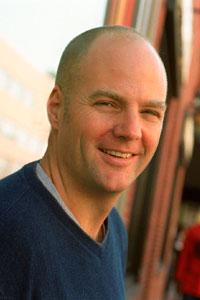非常抱歉,
你要访问的页面不存在,
非常抱歉,
你要访问的页面不存在,
非常抱歉,
你要访问的页面不存在,
验证码:

职称:Tarr Family Professor of Bioengineering and Applied Physics
所属学校:Harvard University
所属院系:Bioengineering
所属专业:Bioengineering and Biomedical Engineering
联系方式:
Kit Parker researches cardiac cell biology and tissue engineering, traumatic brain injury, and biological applications of micro- and nanotechnologies. He is involved in projects ranging from creating organs-on-chips to developing nanofabrics for applications in tissue regeneration. Through funding from the National Institutes of Health and the U.S. Food and Drug Administration, he is currently helping develop a "heart-lung micromachine" that will accelerate drug safety and efficacy testing. Parker is the Tarr Family Professor of Bioengineering and Applied Physics in the Harvard John A. Paulson School of Engineering and Applied Sciences and a Core Faculty Member at the Wyss Institute for Biologically Inspired Engineering at Harvard University. At SEAS, he is the director of the Disease Biophysics Group whose research focuses on mechanotransduction in neural and cardiovascular systems. He is also a member of the Systems Biology Program at Harvard Medical School, the Harvard Stem Cell Institute, and the Harvard-MIT Health Sciences and Technology Program. The Disease Biophysics Group (DBG) at Harvard University is an interdisciplinary team of biologists, physicists, engineers and material scientists actively researching the structure/function relationship in cardiac, neural, and vascular smooth muscle tissue engineering. We seek to quantify cellular mechanotransduction at the single-cell and tissue level to understand the effect on electrophysiology and disease states. Specifically, we are interested in how extracellular matrix and cytoskeletal architecture potentiate and modulate the activation of mechanochemical and mechanoelectrical signaling pathways and genetic programs in cardiac, neural, and vascular smooth muscle cells and tissues. In order to study these mechanisms at different spatial scales, we use cellular and tissue engineering techniques that allow us to build custom-designed tissue constructs as experimental preparations.
Kit Parker researches cardiac cell biology and tissue engineering, traumatic brain injury, and biological applications of micro- and nanotechnologies. He is involved in projects ranging from creating organs-on-chips to developing nanofabrics for applications in tissue regeneration. Through funding from the National Institutes of Health and the U.S. Food and Drug Administration, he is currently helping develop a "heart-lung micromachine" that will accelerate drug safety and efficacy testing. Parker is the Tarr Family Professor of Bioengineering and Applied Physics in the Harvard John A. Paulson School of Engineering and Applied Sciences and a Core Faculty Member at the Wyss Institute for Biologically Inspired Engineering at Harvard University. At SEAS, he is the director of the Disease Biophysics Group whose research focuses on mechanotransduction in neural and cardiovascular systems. He is also a member of the Systems Biology Program at Harvard Medical School, the Harvard Stem Cell Institute, and the Harvard-MIT Health Sciences and Technology Program. The Disease Biophysics Group (DBG) at Harvard University is an interdisciplinary team of biologists, physicists, engineers and material scientists actively researching the structure/function relationship in cardiac, neural, and vascular smooth muscle tissue engineering. We seek to quantify cellular mechanotransduction at the single-cell and tissue level to understand the effect on electrophysiology and disease states. Specifically, we are interested in how extracellular matrix and cytoskeletal architecture potentiate and modulate the activation of mechanochemical and mechanoelectrical signaling pathways and genetic programs in cardiac, neural, and vascular smooth muscle cells and tissues. In order to study these mechanisms at different spatial scales, we use cellular and tissue engineering techniques that allow us to build custom-designed tissue constructs as experimental preparations.